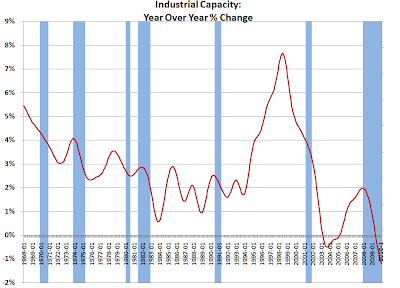
The spread between the non-seasonally adjusted numbers for U-6 - U-3 set a new record in February, at 7.5%. The value for the spread in March is 7.3%.
I have been arguing for some time that the UE rates and persistence are not lagging indicators but rather harbingers...but more on a gut basis rather than with any quantitative arguments. So this is an initial foray in that direction.
The old saw about UE being a lagging indicator is fundamentally based on the idea that things are going to go along in "Business As Usual" (BAU) mode. The dramatic elevation of the spread between U-6 and U-3 indicate that significant structural changes in employment markets are afoot.
The quantitative argument rests on the assumption of a normally distributed spread around the mean value, which may be questionable but not unreasonable (particularly from a simplistic BAU framework).
If we restrict BAU as the period prior to the start of this recession, the spread has a mean of 3.64% and a standard deviation of 0.42% which means the probability of seeing the current spread of 7.3% would occur once each 6.2 x 10^16 observations (monthly), or once every 5.1 x 10^15 years or so...without getting into the significant issues of autocorrelation for this series (the previous month's observation has significant predictive value for the next month's observation).
If we take a more expansive view of BAU as including the perturbations of the current recession then we experience a mean of 4.08% with a standard deviation of 1.13%, which would put the probability of the current spread at once each 159 observations, or once every 13.2 years.
No doubt the econometric police will shower me with approbation for this exercise, however it seems like the most direct way to make a quantitative argument that there are profound structural changes underway in the labor market and prism of recent experience during the expansion of the FIRE segment of the economy is a poor guide for the future.









